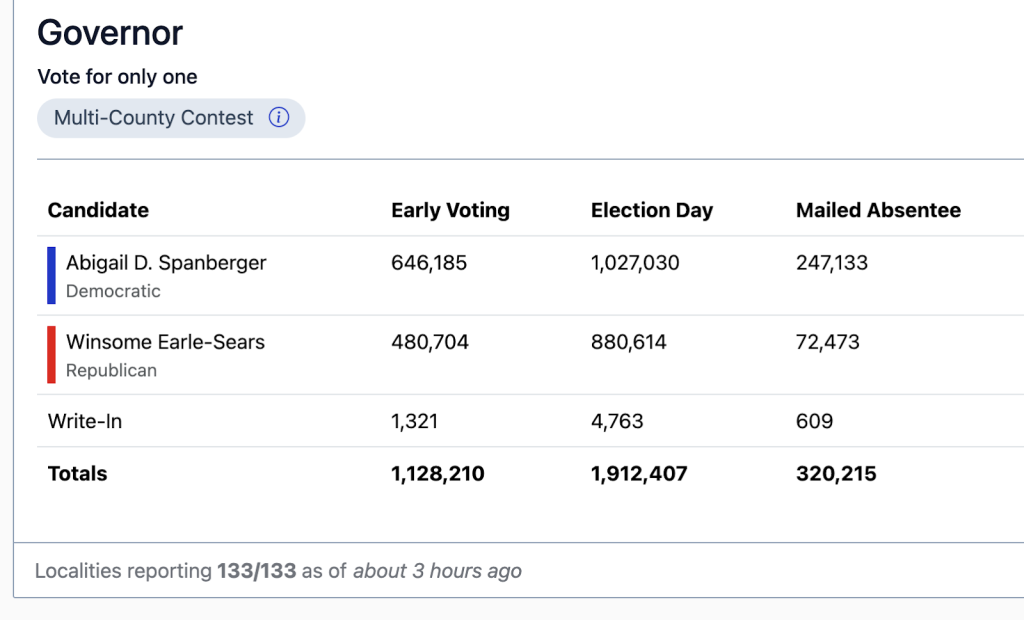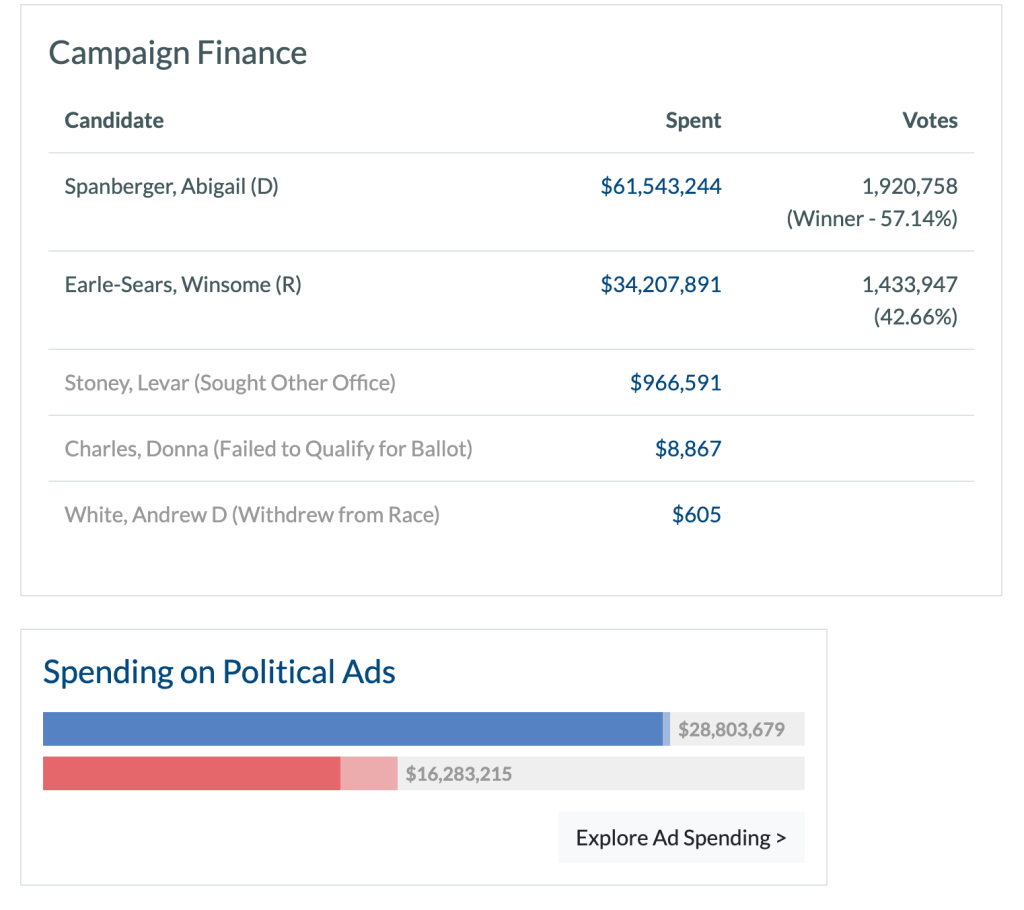The 2025 elections are over. In a strange and tense off-year cycle dominated by slop headlines about Dems panicking and an intense hyperfixation on the New York City mayor’s race, the Democrats ended up with their best night since 2017. What did we learn?

1. It’s the Economy, Stupid?
For months, pundits and analysts wondered why Trump’s approval ratings and Democratic generic ballot polls weren’t dropping alongside opinions of the economy and consumer sentiment. Tariffs, foreign policy, and DOGE hadn’t seemed to deliver Democrats the kind of resounding momentum that had already occurred during the 2017 cycle.
That is no longer the case. From the exit polling and the results across the country, voters are very, very concerned about the economy, even more so than expected. A significant chunk of the 2025 Republican voters (around 35% in both races) and a large plurality of independents all listed the condition of the economy as their No. 1 issue.
As happened in 2021-2024, many Republican partisans are wondering why. The stock market is up. GDP growth appears to be solid. The labor market, while showing signs of stress, hasn’t collapsed. Inflation has slowed to a manageable 3% per year, and the Fed is cutting interest rates. Why are voters so mad?
Well, the economy is partly a function of partisan response, but also a function of baseline inequality, dissatisfaction with government, and dissatisfaction with life (you could argue healthcare, the second-largest issue for most voters this year, is the same). The economy is not “consumer sentiment” or arguing about whether GDP is growing or not. I was recently reading Vladislav Zubok’s latest book on the Cold War, and he pointed out that, in our post-Communist age, it’s the economy, stupid, for pretty much every person in every country.

It’s about paying $14 for Chipotle instead of $10, having your electricity bills go up, and being able to afford a house. These are not strictly political questions, but if you are forming your political opinions and you see your life getting worse, then you probably aren’t going to like who is in charge. People are going to ask: “What have you done lately?”, and if the answer is “added costly tariffs, focused on cruel deportations, and wrecked the federal government” instead of “anything to help me, personally”, you will suffer.
2. Differential Turnout Matters; Overall Turnout to be Determined
Much will be made of Democrats dominating in off-year elections with “high-propensity” voters, but the elections in 2025 have shown the picture is more complicated. Much like the Wisconsin Supreme Court race in May 2025, the overall turnout for the gubernatorial races was robust, but Democrats had exceptionally good turnout.
In Virginia, the overall turnout remained high; we don’t have full results, but I’d estimate the turnout was close to 2021’s 55%, give or take 1-2% either way. Winsome Earle-Sears got more votes than Ralph Northam in 2017, but lost by more than 15%. What was shocking was that Democrats were the clear beneficiaries of differential turnout, or what campaigns refer to as “get the vote out”. In this case, it’s not a factor of overall turnout, but whether a marginal Dem voter is going to show up vs. the marginal Republican voter. Unlike 2024 in Virginia, the marginal voters were more likely to be Democrats, and the results speak for themselves.
We can see this from voters on Election Day, who tend to be “lower-propensity” and less partisan than early voters. On Election Day 2024, Trump won Virginia day-of voters by about 5%. In 2025, Spanberger won Election Day voters by 7%, the biggest difference of any vote method.

Thus, the question is not limited to effects with high-propensity voters, but also a question of thermostatic opinion, candidate effects, and spending. Turnout and persuasion are linked! In 2024, Biden was president, and Democrats were more checked out. Harris spent all her money and campaign resources on the seven swing states, which saw better turnout and persuasion for Democrats, and lost much more ground in the other 43 states. The issues Democrats had with “low-propensity” voters didn’t magically go away; they simply campaigned and had large spending advantages in 2025 to improve.
Sadly, New Jersey doesn’t have readily available data by method (or count all the votes in a timely manner), but we can infer that Sherrill did far better with low-propensity voters this time around.
3. Political Spending Still Matters
Getting blasted off the airways by negative ads still matters. Spending against Mamdani, Ciattarelli, Earle-Sears, Jay Jones, and NO on Prop 50 all mattered. It may not have mattered since none of the races were within 2%, but the spending clearly helped Dem turnout in all of those races.

Money isn’t everything, but it can still help you motivate your partisans and drive down the reputation of the other candidate. Candidates don’t get 18-point swings from the previous election by doing nothing.
4. A Democratic Bounceback for Latinos and Asians?
Across the country, Democrats bounced back with Latino and Asian voters.
What does this mean for the future? Well, I continue to believe Latino and Asian voters are very swingy demographics, and the situation can change drastically depending on who is in power. As the softest voters in any coalition, a solid portion of non-college-educated Latinos and Asians can just as easily vote for Zohran Mamdani as Donald Trump. Are these the same people? In many cases, no, (Dems clearly motivated new voters/Trump alienated them with policy), but in some cases, a lot of Latino and Asian voters clearly had instantaneous buyer’s remorse. Does this mean Democrats have solved the problem? No, but we shouldn’t assume Trump has either.
We are in an age where old political realities are being shed rapidly. What looks like a durable coalition can become a wipeout in short order. With Reddit, WhatsApp chats, and short-form video more popular than ever, large swings in certain demographics cannot be ruled out.
5. The End of the “Good” Republican
For years, the Republican Party has relied on Democrats who support the top of the ticket but vote Republican downballot for various reasons. In every presidential cycle since 1988, the generic ballot vote has favored Republicans vs. the presidential ticket (including 2024). As you go further down the ballot, Republicans have tended to do even better. This has been particularly relevant for downballot state legislature races, where local Republicans in blue states routinely overperform federal representatives and the presidential ticket. That trend was already struggling in 2024 when ticket splitting shrank to its lowest level in recent history, and it experienced a further decline in 2025.
It wasn’t limited to Jason Miyares’ comfortable defeat to notorious edgelord texter Jay Jones. In Virginia, every Republican in the House of Delegates representing a seat bluer than Trump +3 was defeated. This included eight Republicans holding seats that Harris won in 2024 that went Republican in 2021 and 2023. While Spanberger’s big win helped, the Republicans in those seats got no help from incumbency and were tossed out by significant margins. In HD-57 (Western Henrico), Democrat May Nivar improved on Harris’ margin in 2024 and won by 10.6%. In HD-64 (Stafford County), Stacey Annie Carroll defeated incumbent Republican Paul Midle by 5.7%, despite the fact that it was a Trump +1.9 seat.
In New Jersey, the Democrats picked up at least three State Assembly seats, despite projections assuming they could lose one. New Jersey is particularly prone to Democratic split-ticketing, so much so that Democrats sometimes leave seats uncontested that were won by the presidential candidate. But with Sherrill winning by double digits, it was finally not enough for several Republicans in at-large Assembly seats.
The same story took place across the country, with Republicans of all backgrounds paying a huge price for Trump’s unpopularity. In essentially every race, Democrats performed well, whether it was in Mississippi, upstate New York, the Pacific Northwest, or Texas. Just as nationalized politics took their toll on Democrats like Sherrod Brown and Jon Tester, it is now destroying Republicans in competitive areas who cannot outrun the environment.
